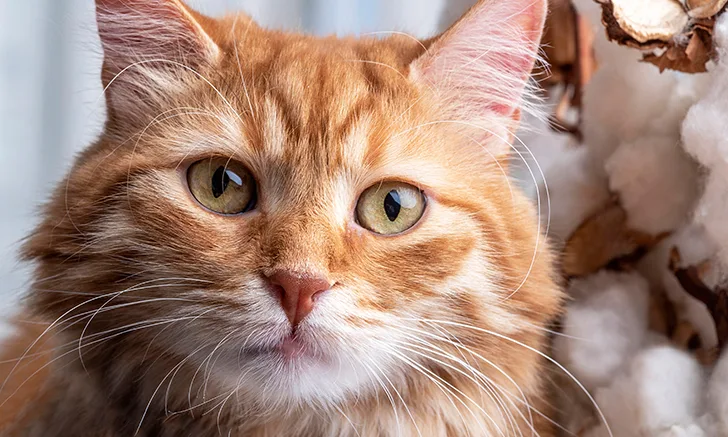Clinical Challenge: Enhancing Feline Vaccine Protocols with Intranasal Vaccines

Sponsored by Zoetis
Although core and noncore vaccines are clearly defined for cats, feline vaccine protocols are not a one-size-fits-all approach. Dynamic risk factors (eg, age, environment, lifestyle, health status, temperament) vary by patient and can change over time, requiring individualized protocols to be created for each cat and re-evaluated at each appointment.1 Due to the evolving needs of every cat, intranasal vaccines can be beneficial at every practice.
Promoting Healthy Starts: Meet Jasper
Jasper, a 12-week-old, neutered, domestic longhair kitten, was presented for his first kitten examination after adoption from a shelter. His owner was a long-time client whose previous cat had recently passed away. The owner was planning to keep Jasper strictly indoors. He had a mild upper respiratory infection, but physical examination was otherwise unremarkable.
Core vaccines for all kittens include FPV, FHV-1, FCV, rabies, and FeLV, regardless of the kitten’s indoors status.1 Indoor cats are still at risk for common communicable diseases such as FPV, FHV-1, and FCV through veterinary visits, travel, boarding, visiting cats, and fomites carried on hands and clothes.1 FeLV vaccination is likewise considered core for all kittens, as FeLV is contracted through sustained close contact with other cats. Because kittens are more susceptible to persistent infection with FeLV and a kitten’s future indoor/outdoor status may change as it ages, vaccination is considered essential regardless of current indoor/outdoor status.1,2 In addition, a 2016 study showed that 1 out of 10 adopted pets were no longer living in the home 6 months after adoption, demonstrating that housing situations can change unexpectedly, and future housing situations may result in a different risk level.3 Because rabies is a disease of great zoonotic significance, vaccination against rabies is required regardless of lifestyle wherever it is mandated by law.4
For more robust FHV-1 protection, a protocol combining parenteral and intranasal FHV-1 vaccines can be used.5 In addition, modified live vaccines are better at overcoming maternally derived antibodies.6 In a challenge study, the FHV Vanguard Feline RC Intranasal vaccine, a modified live FHV-1 and FCV combo vaccine, reduced both clinical signs and viral shedding of FHV-1 when given with an injectable FHV-1 vaccine.5
Fostering Safety: Jasper Makes Friends
When Jasper was 2 years of age, he was presented for his annual examination. FVRCP, rabies (3 year), and FeLV had been boostered at his 1-year examination a year prior. Jasper was a healthy young adult cat, and his owner had no concerns, aside from the fact that Jasper had experienced 1 or 2 episodes of sneezing and unilateral ocular discharge, which had resolved on their own. The owner reported Jasper was still indoor-only, but upon further questioning, the owner shared that Jasper did interact with a neighborhood cat through the porch screen, and he spent a lot of time on his “catio” screened-in porch. She was unsure if he interacted with other cats as well in this manner. Jasper had escaped the porch once or twice but returned home by the next morning, with no apparent injuries.
Infectious diseases are common in stray cats, with most carrying at least 1 infectious respiratory disease (eg, FHV-1, FCV, Chlamydia felis, Bordetella bronchiseptica, Mycoplasma felis)7 and, potentially, other infectious diseases. Although direct contact with cats of unknown vaccination status may be infrequent, the health and safety of patients must be ensured; thus, vaccination against these infectious diseases stray cats may potentially carry is critical. In addition, interactions with stray animals outside the household may also create stress for the pet, allowing latent diseases to recrudesce.1 Boosting immunity with vaccinations is a simple, easy method to help protect pets.
The Vanguard Feline RC Intranasal vaccine is ideal for helping protect cats from suffering from serious respiratory disease if exposed to FHV-1. Modified live vaccines mimic natural immunity and have a rapid time to onset.1,8 Further, in a study, intranasal administration of modified live, intranasal FHV-1 and FCV vaccines helped lessen disease in chronically infected cats.9 As a yearly vaccine that protects against FHV-1 and FCV, Vanguard Feline RC Intranasal is a convenient way to help boost Jasper’s immunity against these upper airway diseases.
The Vanguard Feline RC Intranasal vaccine is ideal for helping protect cats from suffering from serious respiratory disease if exposed to FHV-1.
Rabies and FPV vaccines provide a strong protective response, such that revaccination more frequently than labeled instructions for rabies is unnecessary in low-risk adult cats.1,4,8,10 In contrast, FHV-1 and FCV both provide nonsterile immunity that may wane over time, so boosting cats at high risk (eg, foster homes, catteries, shelters, contact with incompletely vaccinated cats) yearly is recommended.1,8,9,11 Similarly, routine vaccination with FeLV is recommended now that Jasper is at risk for contact with other cats. In a study, unvaccinated cats with bite wounds were 7.5 times more likely to be infected with FeLV than vaccinated cats, demonstrating the importance of vaccination.12
Jasper’s Owner Asks Questions
At 7 years of age, Jasper was presented for his annual examination and vaccines. He was due for FPV, FHV-1, FCV, FeLV, and rabies. After adopting 1 of the stray cats a few years ago, Jasper’s owner was no longer allowing him (or the other cat, now fully tested and vaccinated for infectious diseases) access to other cats. No attempts at going outdoors had been made for years, and Jasper’s catio no longer allowed neighborhood cats to come in contact with the screens. The owner questioned whether he still needed to be vaccinated regularly considering his older age. He was having routine wellness blood work performed every year to monitor his health, and his owner questioned whether titers could be run rather than vaccine injections.
Antibody testing provides an evidence-based assessment of immunity that may be used as an alternative to vaccination.1 However, serology testing for this purpose is a viable option only for FPV.1,8 Although a positive FPV titer test strongly correlates with protective immunity in cats, immunity to FHV-1 and FCV requires both an antibody and cell-mediated immune response, making antibody testing an unreliable predictor of immunity.1,8 In addition, rabies must be vaccinated for as per state law, regardless of antibody testing results.1
Although antibody testing may be cost-prohibitive to some owners, others may appreciate the opportunity to reduce the number of injections.8 If Jasper’s owner had elected to do so and Jasper had adequate protection on his FPV antibody testing, he could forgo an FPV vaccine that year and receive the intranasal Vanguard Feline RC vaccine for protection against FHV-1 and FCV, thereby reducing his injections to just 1—his rabies vaccine. Given that Jasper was now confirmed strictly indoor, he no longer needed regular FeLV boosters.
Maintaining Protection with Age: Assessing Senior Jasper’s Risk
At 13 years of age, Jasper was presented for a routine annual examination and vaccines. Jasper had recently been diagnosed with IRIS stage 2 CKD with hypertension and was well controlled with a renal diet and amlodipine.
Several age-related factors affect the risk–benefit assessment of senior cats.13 Immunosenescence may blunt the immune response, leaving older pets more susceptible to infection.14,15 As long as a senior cat’s disease is well controlled, he or she should continue standard vaccination protocols.14,15
Conclusion
Vaccine protocols are dynamic and require reassessment for every cat at every appointment. Older pets should continue to be routinely vaccinated, as immunosenescence may increase their vulnerability to infectious disease.
SAB-01032
